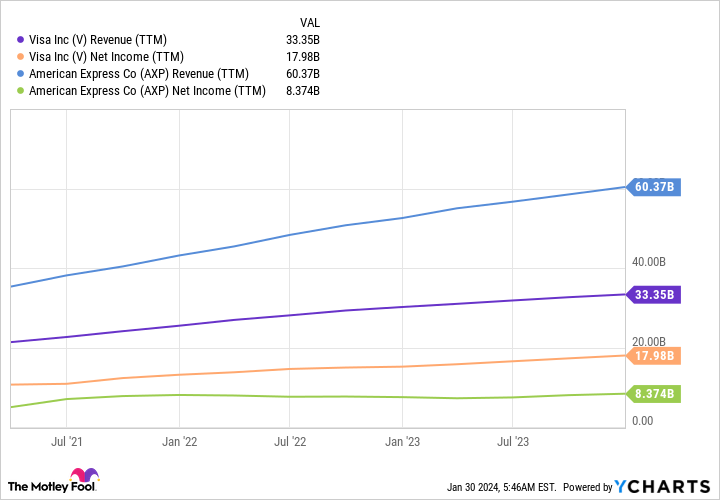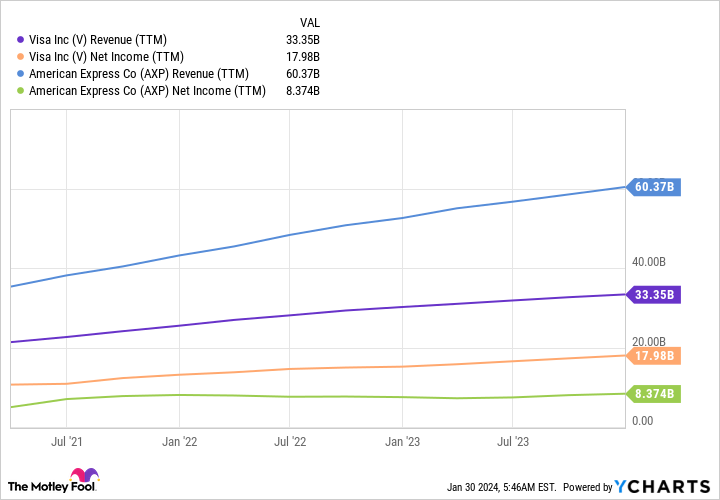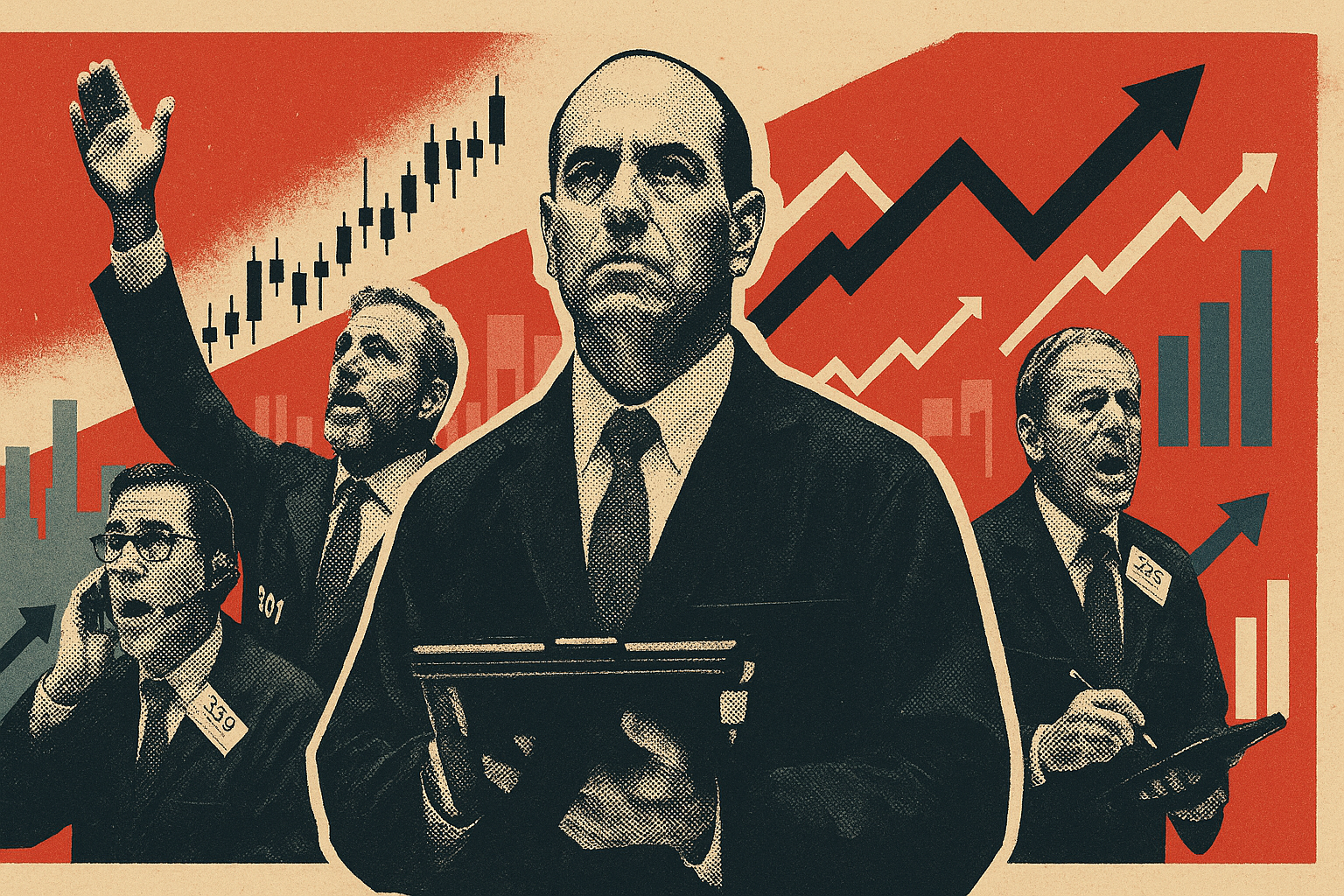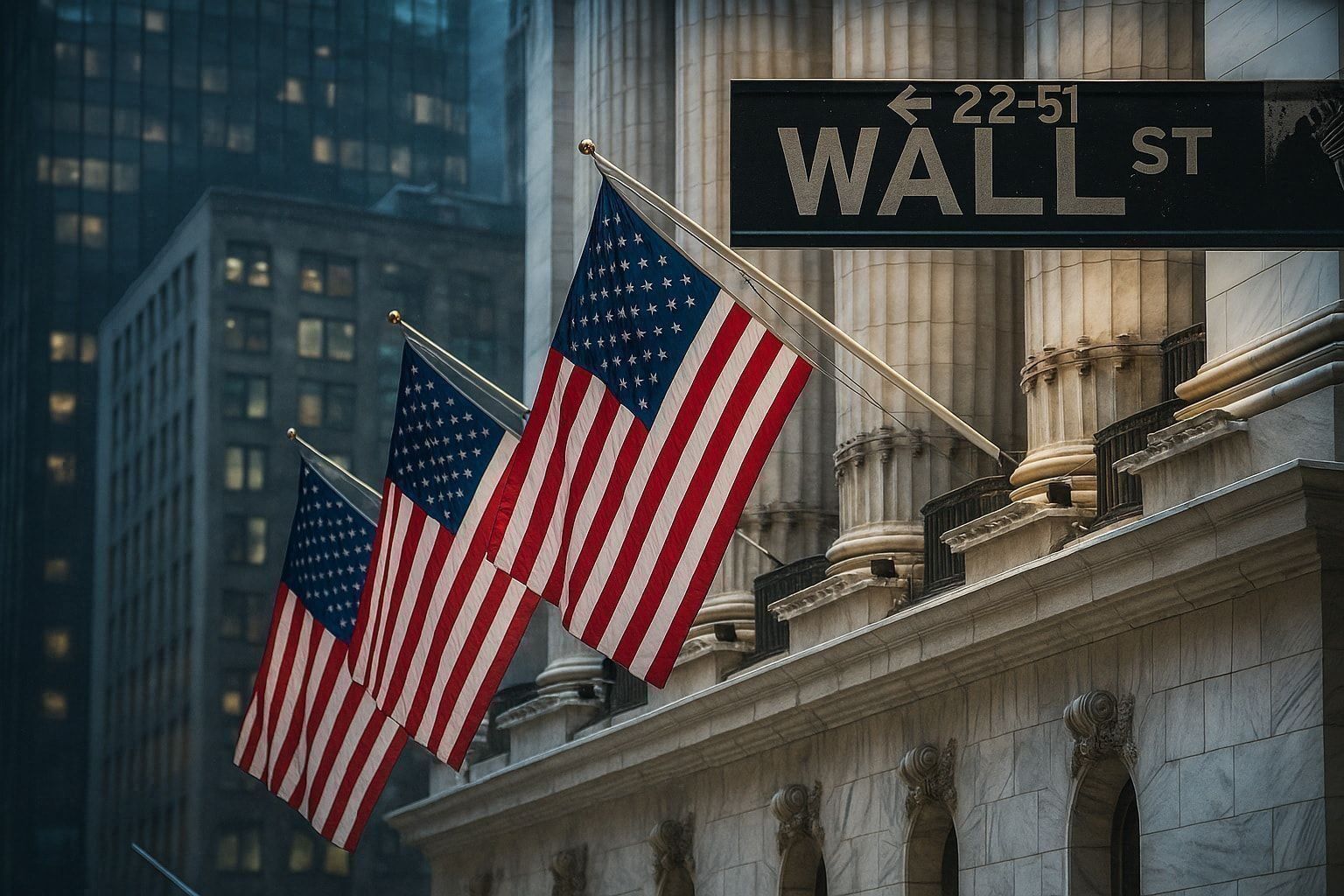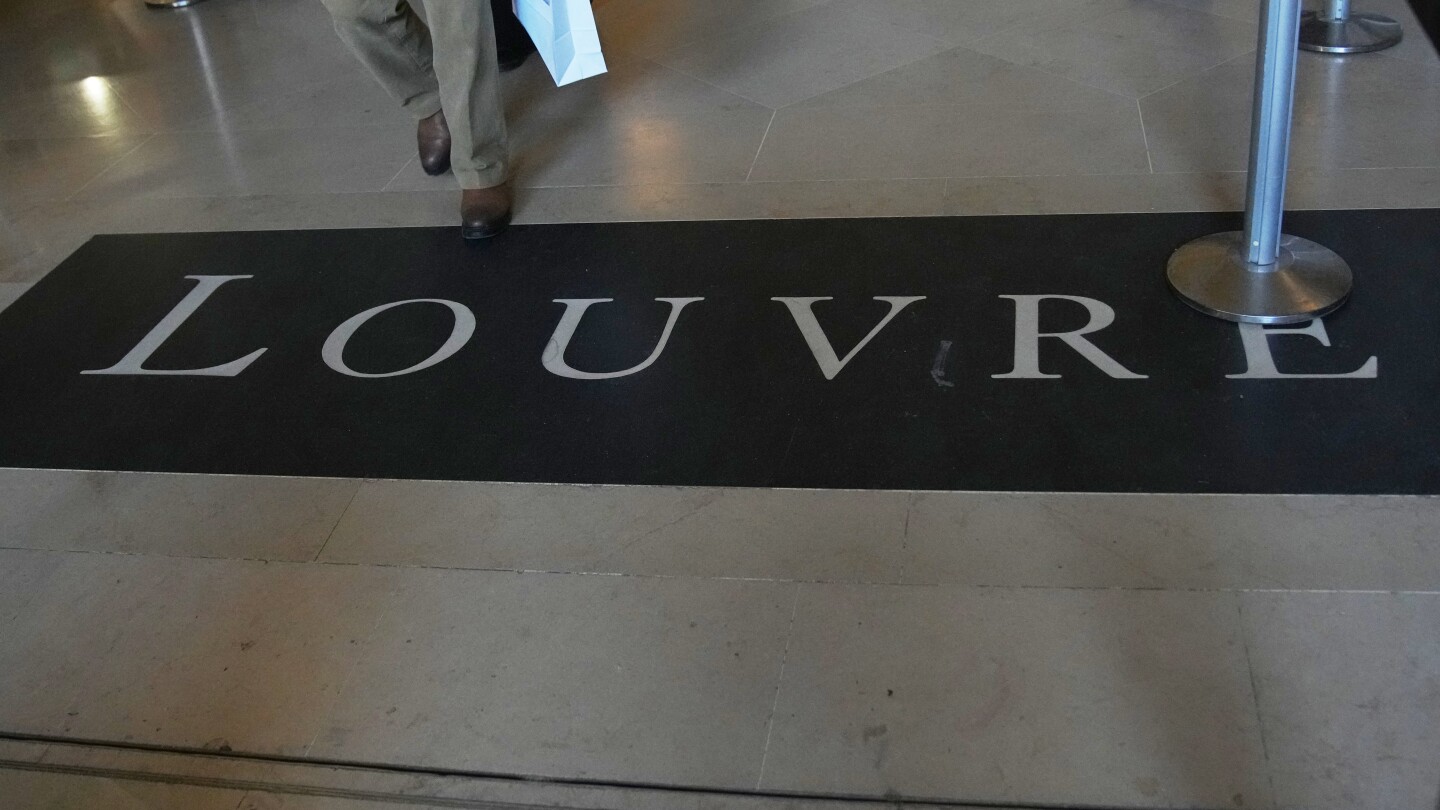More people have a Visa (NYSE: V) credit card than any other credit card in the world. It powers 4.3 billion cards globally, a number equal to more than half the world’s population.
It processed more than $15 trillion in payments over the trailing 12 months, and it works with more than 14,500 financial institutions worldwide.
You might think it’s unbeatable, and in certain ways, it is. But there’s another credit card company that makes almost double Visa’s revenue, and you might be surprised to learn that it’s American Express (NYSE: AXP).
Two different credit card models
Many people think of Visa and American Express as similar credit card networks. But they actually function quite differently.
Visa is mostly a processor, although it does have some other services. To send money through its vast network, merchants and clients need to pay it a small fee for every swipe.
However, it doesn’t provide any loans, or credit, to those who make purchases. It’s like highway that can speed your payment to a destination. It relies on partnerships with financial institutions like banks to provide the credit. That’s why a Visa credit card is always branded with a bank name, and you get approval for one through the issuing bank, which lends you the money.
American Express has what’s called a closed-loop system, which means it acts as its own issuing bank. It does not typically work with outside financial partners. That gives it some resemblance to Visa, but also some resemblance to standard banks. It only has 140 million cards in circulation, a tiny fraction of Visa’s count.
Which one is bigger?
This is a bit of a trick question, because it depends how you define “big.” Visa has more cardholders and processes more payment volume. But American Express’ trailing-12-month (TTM) revenue of $60 billion is almost double Visa’s TTM revenue of $33 billion.
How is that so? There’s another important difference between the two. Most of American Express’ members pay an annual fee, and that could be as high as $5,000. While Visa cardholders might pay an annual fee, it goes to the issuing bank, not to Visa.
American Express’ customers also spend more. Amex has been processing about $400 billion in payments volume quarterly, while Visa processes more than $3.5 trillion. American Express has only about 3% of Visa’s card count, but it processes more than 10% of Visa’s volume. It’s also known to take a higher merchant fee than Visa, which adds up with every swipe.
Now that I’ve shown you that American Express might be a much bigger company, the last piece of this is the fact that Visa actually has a much bigger bottom line, with net income more than double Amex’s figure. So at the end of the day, Visa takes home much more money.
Visa has an unbeatable profit margin that’s consistently more than 50%, and it was an incredible 57% in the fiscal 2024 first quarter, whereas American Express’ profit margin was only 12% in the 2023 fourth quarter.
Part of the American Express model is the many perks it offers that attract an affluent consumer. These add up in its expenses, which were $45 billion in 2023.
On top of that, American Express’ banking division has been feeling the impact of higher interest rates, and it has more than doubled its reserves to increase its provisions for losses. That comes out of net income.
Which one is the better stock?
These two stocks moved in tandem with the broader market last year, with American Express slightly outdoing Visa and the S&P 500.
Investors were cheering American Express’ recent quarterly report, while they were less enthused about Visa’s. But both of these offer a similar glimpse into the state of the economy.
You can be like Warren Buffett, who has positions in both Visa and American Express. Each brings something different to the table and offers the growth of a fintech stock with the reliability of an established financial stock.
Buffett seems to favor American Express, which accounts for 8.1% of the Berkshire Hathaway portfolio, its third-largest position. American Express has a better dividend, which is an important piece for Buffett, and its brand and pricing power are incredible.
Investing in either or both of these stocks is investing in the future of the U.S. economy, which is a theme for Buffett. Having at least one in your portfolio is an excellent value choice.
Should you invest $1,000 in American Express right now?
Before you buy stock in American Express, consider this:
The Motley Fool Stock Advisor analyst team just identified what they believe are the 10 best stocks for investors to buy now… and American Express wasn’t one of them. The 10 stocks that made the cut could produce monster returns in the coming years.
Stock Advisor provides investors with an easy-to-follow blueprint for success, including guidance on building a portfolio, regular updates from analysts, and two new stock picks each month. The Stock Advisor service has more than tripled the return of S&P 500 since 2002*.
*Stock Advisor returns as of January 29, 2024
American Express is an advertising partner of The Ascent, a Motley Fool company. Jennifer Saibil has positions in American Express. The Motley Fool has positions in and recommends Berkshire Hathaway and Visa. The Motley Fool has a disclosure policy.
People Think Visa Is the Largest Credit Card Company in the World. But Another One Makes Much, Much More Revenue. was originally published by The Motley Fool

